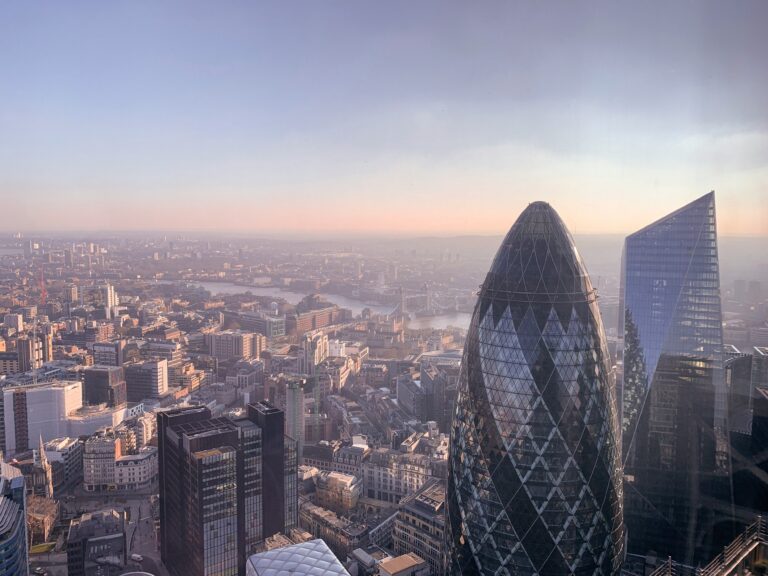Workplace safety is evolving rapidly with new technologies that are transforming how companies protect their employees. While physical security measures like barriers and gates remain critical safeguards, digital systems are enhancing protection through identification, monitoring, communication and emergency response.
In spite of the power of transformative technology, safety in the workplace remains a huge issue; indeed, every year 1.8 million workers in the UK alone suffer some kind of workplace-related injury.
Balancing new capabilities with existing methods is key. And while technology enhances workplace safety through improved identification, monitoring and communication, physical safeguards continue to form the backbone of any security strategy. By harnessing both hardened equipment and digital systems, organisations can achieve comprehensive protection of their most valuable asset: their people.
Physical security
While technology enhances workplace safety, physical security is essential. Measures such as security guards, protective barriers, access control and facility design provide environmental safeguards that digital systems alone cannot. When combined with innovations like AI and analytics, they then offer comprehensive protection for employees.
Security guards provide human oversight as an immediate line of defence. They monitor facilities, escort employees, and respond directly to threats. Protective barriers like fences, security doors and entry points control access and manage vehicle traffic where needed. Facility retrofitting improves lighting, exits, and high-risk area visibility.
These fundamentals are often overshadowed by discussions of digital solutions. But without the basics, no system can be truly effective. Events impacting public venues remind us that workplace violence remains a risk even for well-protected facilities. And while automation excels at detection, human judgement and empathy remain crucial during emergencies.
Cybersecurity
Cyber threats pose significant risks to workplace security, with the potential for data breaches, IT system disruption and financial loss. Robust cybersecurity strategies are essential to protecting employees’ information and networks.
Employee cybersecurity training helps minimise human error through teaching best practices like strong password use, email security awareness and safe internet browsing at work. Two-factor or multi-factor authentication adds an extra layer of login security for employee accounts by requiring codes sent to mobile devices or hardware tokens as well as passwords.
Regular audits and penetration testing proactively identify vulnerabilities in company networks, software and systems. Audits assess current security controls and policies. Penetration testing simulates real-world cyber attacks to detect weaknesses. Findings enable organisations to address risks before incidents occur.
However, effective cybersecurity requires ongoing investment in the latest hardware, software and staff. As threats constantly evolve, maintaining comprehensive protection can be challenging, especially for small companies with limited technical resources.
Artificial intelligence
Artificial intelligence (AI) technologies are enhancing workplace safety through object detection, pattern analysis and anomaly detection. AI powers systems such as security cameras with object recognition that can automatically identify potential threats. AI also allows companies to analyse employee access patterns and detect unusual activity that could indicate risks.
Security cameras with object recognition use AI to continuously scan workplace environments for objects that could pose dangers, such as weapons, without needing human monitoring. The AI algorithms learn to identify items of interest from large datasets of images. However, privacy concerns arise over constant employee surveillance and there are risks of algorithmic bias or errors. There are also limitations to the types of objects that AI can reliably detect.
AI can map typical workplace access patterns for each employee role over time using smart ID access cards or biometric entry systems. By detecting anomalies like unauthorised access or inconsistent check-in times, AI helps identify potential security risks. But false positives could lead to loss of employee trust or morale if not addressed properly. And adversarial techniques might be used to manipulate AI monitoring systems.
ID cards and biometric technologies
Emerging biometric technologies are enhancing employee identification and access control. Systems such as facial recognition, fingerprint scanning and iris scanning capture biological characteristics to verify individual identities with a high degree of accuracy.
Facial recognition uses advanced cameras and algorithms to capture and analyse employee facial features and structure. Fingerprint scanning matches the unique patterns of ridges and valleys in employee fingerprints. Iris scanning analyses the coloured ring around the pupil. These technologies allow companies to confirm employee identities during check-in and restrict access to authorised staff.
However, biometrics raise significant privacy concerns, as personal biological information can be permanently connected to workplace records. Data security is also crucial when storing and transmitting sensitive credentials. Implementation costs including advanced cameras, biometric readers, and software licensing may be prohibitive for some organisations.
When deployed responsibly with proper safeguards and consent, biometrics offer substantial benefits for workplace security. Identification is streamlined for employees, with no need to present keys, ID cards or passwords. Authentication is strengthened for high-security areas, as biometrics are difficult to replicate. Overall access control is improved, allowing companies to establish customised employee access levels throughout the work environment.
Mobile safety apps
Mobile safety apps are improving workplace security through emergency communication, monitoring and risk reporting. Emergency alert apps facilitate rapid response coordination during crises. Check-in apps track the locations of remote or isolated workers. Risk reporting apps allow employees to easily flag security issues from anywhere.
Emergency alert apps connect employees directly to security teams and first responders in critical situations. By mobilising an entire workforce to report threats or call for help, they accelerate response times and potentially save lives. However, high adoption is required to be truly effective, and there are costs in developing and implementing these purpose-built tools.
Check-in apps monitor employee wellbeing through location sharing or periodic status updates. They reassure and enable quick assistance if a worker becomes incapacitated or lost. But they also raise privacy concerns if misused for constant surveillance. Strict policies and consent are essential.
Technologies such as biometrics, AI, mobile apps and wearables are transforming workplace safety through improved identification, monitoring and emergency communication. When integrated with existing safeguards like security personnel, protective barriers and facility design, their potential is best achieved.
The future of workplace security depends on utilising all resources available, from long-standing to leading-edge. With oversight, technology’s promise as an ally is fulfilled, enhancing human capabilities for rapid reaction and insight where needed. But as a sole solution, its perils outweigh benefits. By combining the physical and digital, the past and future work together to guide us.









